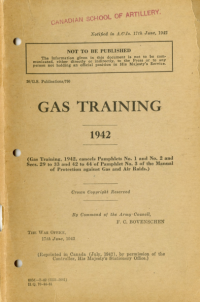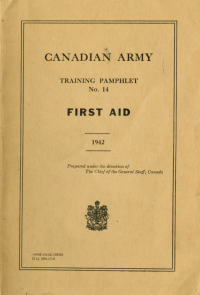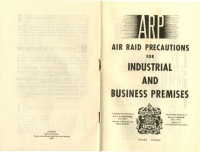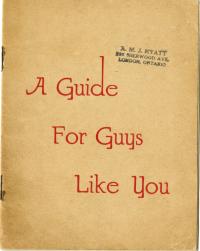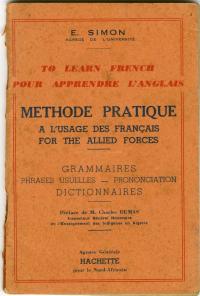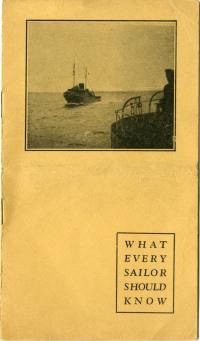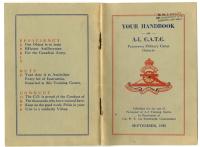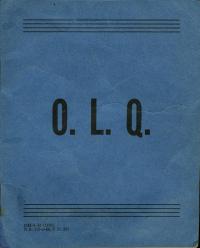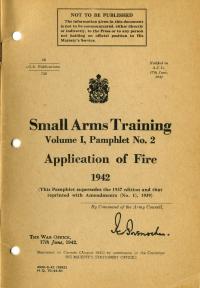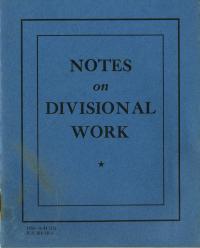Training Manuals
Gas Training Manual
During the 20th-century, the way in which nations fought wars changed dramatically. One of the new tactics that made battle so much more dangerous was the use of chemical weapons, also known as gas. Manuals such as these attempted to prepare allied soldiers with the information needed to protect themselves and their fellow-soldiers.
First Aid Pamphlet
In 1942, the Canadian Army issued this pamphlet which acted as a guide for first aid instructors who were training new recruits. Teaching soldiers about things like wounds, treatment methods, and contamination was very important since medical attention wasn't always readily available on the front lines. The concept of improvisation is also highly stressed since proper tools and materials could be scarce on the battlefield.
ARP: Air Raid Precautions for Industrial and Business Premises
This training manual was published by the Air Raid Precautions (ARP) Organization to protect Canadian industrial facilities and their workers. This manual refers to a real-life air raid (the "Amazing Summer" in Britain, 1940) in order to teach individuals what to expect, and what to do, in the event of an enemy attack.
A Guide For Guys Like You
"A Guide For Guys Like You" was a training document put together to help servicemen from the Royal Canadian Artillery to have a more seamless transition to being stationed in Britain. In the guide soldiers are advised to pay attention to cultural differences and to adapt accordingly.
From variations in dialect, to descriptions of the British countryside, and explaining the lesser known idiosyncrasies of British peoples, this guide was a valuable tool for Canadians serving overseas.
Méthode pratique à l'usage des Français for the Allied Forces
Language barriers were a common yet serious challenge to the efficient collaboration between Allied forces in Europe, as well as in other theatres of war. Not speaking the local language was also disadvantageous when trying to communicate with residents, navigating towns, or while attempting to gather information.
What Every Sailor Should Know
During the Second World War, having men out of service as a result of venereal diseases, or the required medical treatment for them, was a source of great concern for Canadian military authorities. Men in uniform were encouraged to abstain from engaging in risky sexual relations or visit brothels while stationed abroad, and were issued informative (and cautioning) booklets on sexually-transmitted diseases.
A-1 Canadian Artillery Training Centre Handbook
Petawawa Military Camp in Ontario was the training centre for the Canadian Artillery. This booklet was published for the use of those newly arrived at the camp in order to become more familiarized with the grounds, routines and customs. The handbook covers much, from the history of the Royal Regiment of Artillery, to uniforms, badges, auxiliary services, salutes, etc.
Officer-like Qualities
The object of this manual was to give the inexperienced Temporary Officer a sense of the qualities - knowledge, loyalty, firmness, fairness - at which he should aim.
The application of infantry fire-power
This mid-Second World War manual reminded soldiers of the requirements for effective infantry fire, including accuracy, fire discipline, and the ability to judge distance.
How to have a happy and efficient ship
Managing seamen, who were typically divided into four Divisions (Forecastle, Foretop, Maintop, and Quarterdeck), relied heavily on an officer's unselfishness, humour, and common sense - the main principles underlying this training manual.

